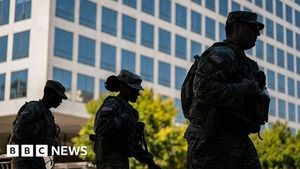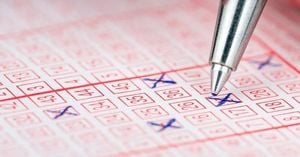A collaborative research effort has revealed new insights on how uracil-DNA glycosylase (UDG), the primary enzyme involved in base-excision repair, identifies and interacts with uracil bases embedded within DNA strands. This study, published on March 7, 2025, demonstrates two potential mechanisms through which UDG recognizes its target bases, known as the ‘pinch-push-pull’ model and thermal base-flipping driven by mechanical forces acting on the DNA.
Uracil, which can arise from incorrectly incorporated nucleotides or DNA damage, poses significant risks to genetic integrity. It is estimated there are about 1 million damaged bases per cell daily, and UDG plays a pivotal role by excising these bases to prevent errors during DNA replication. The efficiency of UDG is impressive, as it can sample around 70,000 base pairs of DNA within each cell division due to its high abundance—approximately 100,000 copies of the enzyme are available within the cell nucleus.
The study utilized advanced molecular dynamics (MD) simulations, exploring the molecular interactions between UDG and uracil bases, particularly focusing on how mechanical forces facilitate the base-flipping process. Researchers examined both the traditional idea of UDG actively ‘pinching’ the bases out of DNA and the alternate hypothesis where thermal forces inherent to the DNA structure promote base flipping.
"Our study provides evidence... mechanical instabilities of dsDNA... may represent... a relevant, alternative or complementary pathway allowing the identification of uracil by UDG," wrote the authors. This perspective challenges the assumption of purely random searches employed by UDG, proposing instead dynamic interactions within the crowded environment of the nucleus, where DNA is subjected to numerous untargeted forces.
Initial molecular simulations show the flipping of uracil bases can occur when DNA is subjected to mechanical stress, resulting in configurations conducive to enzyme recognition. Specifically, the extracted base-flipped DNA structures were subjected to docking simulations with UDG, assessing the fidelity of recognition complexes formed during these encounters.
Through their extensive simulations, the authors found the flipping process to be energetically viable, with the free energy penalty for the extrahelical state of uracil base estimated at approximately 10 kilocalories per mole. Previous studies have indicated this flipping state can remain stable for microseconds, making the prospect of UDG engagement plausible under cellular conditions.
Results revealed notable structural deformations upon base-flipping, changing parameters such as the DNA's bending angle and groove widths. The study quantified these effects, indicating the major and minor grooves of flipped-out uracil showed widths of 11 Å and 7 Å, respectively. Such alterations were found to significantly influence how UDG recognizes and interacts with target bases during the repair process.
The simulated dynamics indicated key conformational settings, where the opening angle of the base influenced whether effective docking would occur. Crucially, docking studies emphasized the need for nearly complete flipping (about 150-180 degrees) of the uracil base for optimal interaction with UDG. "...base flipping induced by DNA mechanics can be a relevant mechanism of uracil base recognition by the UDG glycosylase..." noted the authors, underscoring the significance of mechanical flexibility and force on DNA integrity.
Looking forward, this foundational work sets the stage for additional research exploring how DNA dynamics and mechanical forces contribute to the broader DNA repair mechanisms. This insight can illuminate new therapeutic strategies targeting DNA repair processes involved in various diseases, including cancer, through enhanced enzyme targeting or modulation.
Overall, the findings showcase the dynamic interplay between DNA structure, repair enzymes, and mechanical pressures within the cellular environment, clarifying the roles played by UDG and potentially redefining mechanisms observed within other DNA repair contexts.



